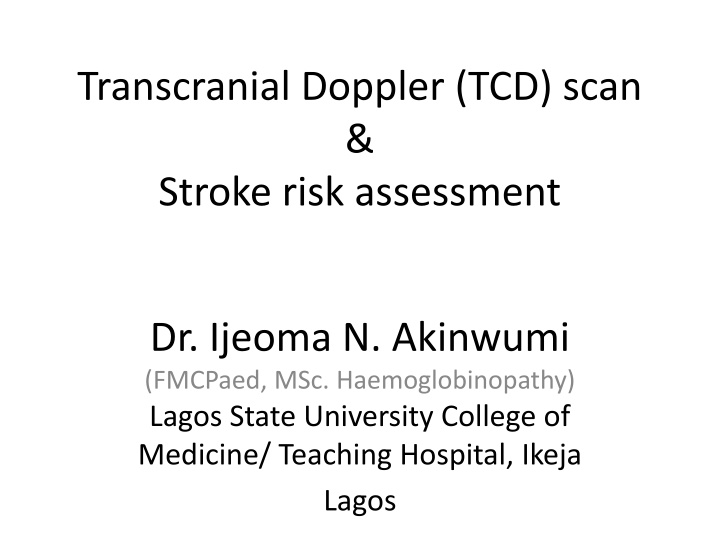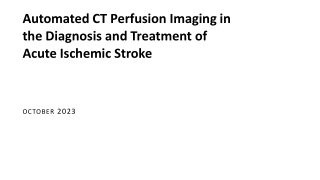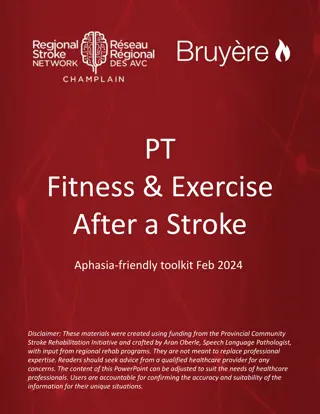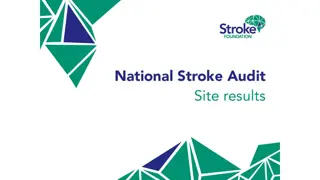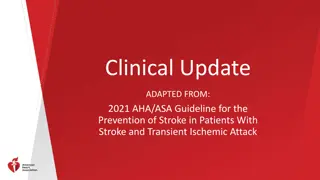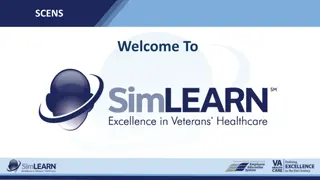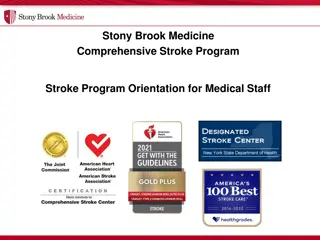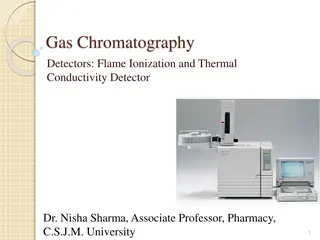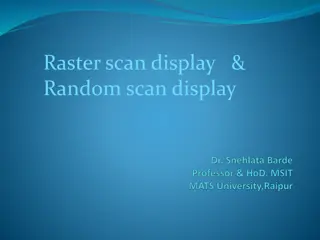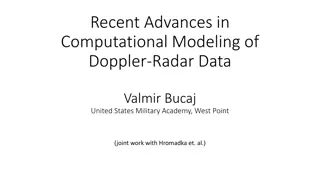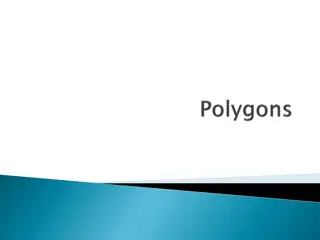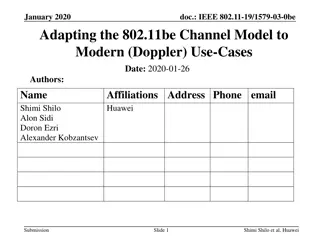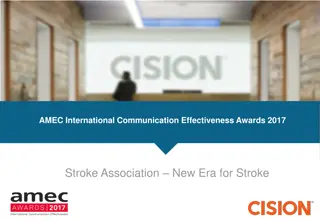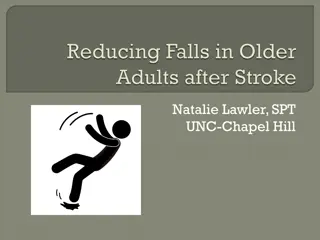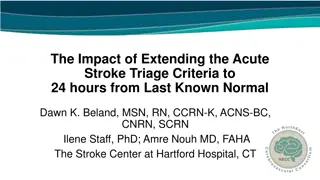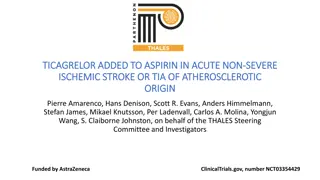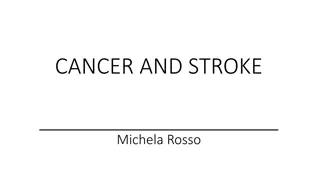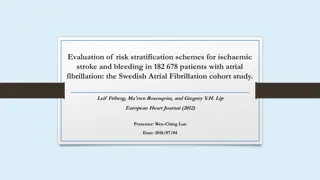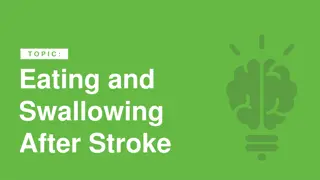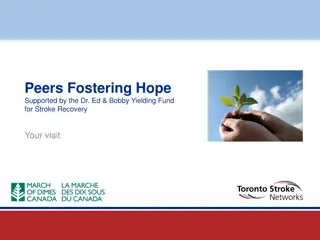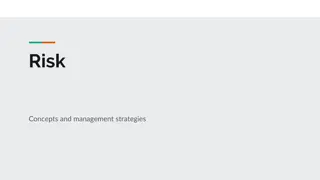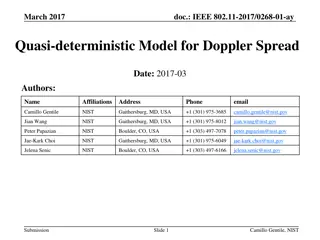Transcranial Doppler (TCD) scan & Stroke risk assessment
Dr. Ijeoma N. Akinwumi, a specialist in Haemoglobinopathy, offers Transcranial Doppler (TCD) scans for stroke risk assessment at Lagos State University College of Medicine. TCD scans are a non-invasive method to evaluate blood flow in the brain, aiding in the detection and management of stroke risk factors. Dr. Akinwumi's expertise and services provide valuable insights for patients concerned about their neurological health.
Download Presentation

Please find below an Image/Link to download the presentation.
The content on the website is provided AS IS for your information and personal use only. It may not be sold, licensed, or shared on other websites without obtaining consent from the author.If you encounter any issues during the download, it is possible that the publisher has removed the file from their server.
You are allowed to download the files provided on this website for personal or commercial use, subject to the condition that they are used lawfully. All files are the property of their respective owners.
The content on the website is provided AS IS for your information and personal use only. It may not be sold, licensed, or shared on other websites without obtaining consent from the author.
E N D
Presentation Transcript
Transcranial Doppler (TCD) scan & Stroke risk assessment Dr. Ijeoma N. Akinwumi (FMCPaed, MSc. Haemoglobinopathy) Lagos State University College of Medicine/ Teaching Hospital, Ikeja Lagos
Stroke risk assessment Stroke is a vascular event with neurological sequelae. Only the ischaemic type predominant in childhood SCD can be predicted. Comprehensive care & hence routine practice - UK, USA and other countries dealing with SCD includes TCD ischaemic stroke risk assessment/ screening. 1. Identify asymptomatic children at greatest risk for ischaemic stroke 2. Prevent an initial stroke by offering preventive intervention = Primary stroke prevention 3. Secondary stroke prevention prevention of recurrence
Cost of Stroke Morbidity Prevents achievement of expected independence and full potential Adversely affects the quality of life Imposes emotional, physical, psychosocial and financial burdens on their family, society Financial burden to the healthcare system Mortality PREVENTION IS DESIRABLE!! Stroke risk assessment is EXTREMELY IMPORTANT. Steinlin et al, 2012
Epidemiology of childhood Stroke Rare worldwide, approx 0.003% SCD is a major contributor - HbSS>>HbSC. Ischaemic or haemorrhagic or combined In SCD Peak incidence of 1st stroke Most before 10yrs and rare below age 1 yr By age 20 years 11%. (Ganesan et al, 2002; Kirkham et al, 2004; Mallick and O Callaghan, 2010; Ohene-Frempong et al, 1998) age 2-5yrs
SCD related stroke in Nigeria Clinical stroke rate is 5-8.4% of affected children 14-20% of children die. Recurrence rate 26 - 75% 2/3rdsurvivors - lifelong handicaps 28% stroke related epilepsy & 26% school dropout rate (hosp based data) Also unreported strokes & deaths in community Fatunde, 2005; Kehinde, 2008; Lagunju &Brown, 2012
History of Stroke risk assessment Aaslid et al, 1982, 1strecommended time averaged mean max velocity (TAMMV) in cm/sec for occlusive cerebral artery disease - less vulnerable to haemodynamic changes - corresponds better to cerebral perfusion & ideal for categorization of stroke risk. Adams et al, 1992 predicted stroke risk using non- imaging transcranial Doppler techniques Ohene-Frempong et al 1998 Risk factors for CVA in SCD from 20yr natural hx study of 4,000 pts (0- 45yrs) Adams et al, 1998 (STOP trial)-RCT blood transfusion vs standard treatment, outcome stroke Nichols et al, 2001 developed STOP Guidelines categorising and indicating need for intervention
Large artery vasculopathy Vessels of the Circle of Willis, notably: Internal carotid artery (ICA) Middle cerebral artery (MCA) in 85% (training) Anterior cerebral artery (ACA) Rarely, Posterior cerebral artery (least likely, 1%) - often not studied.
Risk factors for ischaemic stroke Clinical (history, exam) Age: peak at 2-5 yrs, most before age 16 years Siblings with SCD and Stroke Low arterial oxygen saturation (SPO2) Relative systemic hypertension (SCD normal is lower) Acute chest syndrome in preceding 2wks or frequently >2 times per annum Transient Ischaemic attacks Infections, esp meningitis Ohene-Fremong et al, 1998
Risk factors continued Laboratory Low steady state Hb concentration/ PCV High leukocyte count High reticulocyte count Elevated serum bilirubin and LDH Imaging/ radiological High cerebral artery flow velocity/ Abnormal TCD study ( TAMMV 200cm/s) Now used as proxy for stroke risk and correlates well with other risk factors. MRI Moya moya, Silent cerebral infarct Ohene-Fremong et al, 1998; Pegelow et al, 2002
Eligibility for TCD screening (Nichols et al, 2001). The STOP guidelines listed clinical conditions which may affect the authenticity of TCD studies Erroneously low TCD velocity: Recent blood transfusion may reduce HbS % - hypocarbia can lower TCD velocities below a patient s baseline. Erroneously high TCD velocity: hypoxia, hypoglycaemia, hypercarbia, fever acute anaemic / pain acrisis may increase cerebral blood flow and TCD velocity Recommendation: Asymptomatic child in steady state.
STOP Guidelines for interpretation (Nichols et al 2001) The criteria for classification were based on TAMMV flow in any one of the distal ICA, proximal MCA or ACA (highest determines) 1) Normal: when TAMMV< 170 cm/sec; 2) Conditional: when TAMMV 170 but < 200 cm/sec, and 3) High risk: when TAMMV 200 cm/sec. Repeat TCD scans two weeks later for high risk subjects.
Interpretation of TCD Highest TAMMV in any studied artery determines category TAMMV 200cm/s (high risk/ abnormal TCD)- 40% risk of stroke in 2 yrs TAMMV 170cm/s but < 199cm/s (conditional risk) 7% standard 2% stroke risk as in the general SCD population was reported in children with TAMMV <170cm/s (normal TCD) (Adams et al, 1997; Adams et al, 1998).
Interpretation contd Subjects prone to overt stroke could also have a TAMMV <70cm/s in their MCA velocity Inadequate study despite adequate temporal window or A comparison of non-imaging TCD and MRI/ MRA suggest these findings are indicative of vasculopathy. This category not included in STOP guidelines Use to MRI/ MRA to confirm vascular stenosis before transfusions therapy is commenced (Adams et al, 1992; Seibert et al, 1993; Seibert et al, 1998).
Non-imaging TCD - Procedure Well patient (steady state if possible) - supine, awake and quiet, not sedated 2MHz ultrasound probe aligned with a specific cerebral artery blindly via thin temporal bone (window) above the zygomatic arch - Temporal insonation window
Optimization The machine records and saves the TAMMV in the ICA, ACA and MCA at maximal sound pitch. For accuracy probe angle is adjusted manually & depth and penetration power of ultrasound waves adjusted by hand held remote Control until highest sound pitch is obtained diff for each vessel The amplitude of the wave form measured & recorded on a screen over time correlates directly with the speed of the blood in cm/sec Corresponds to time averaged maximum mean velocity (TAMMV)
https://encrypted-tbn3.gstatic.com/images?q=tbn:ANd9GcTcDLivLpJatwLOx3QdUy_qaP-6TSqbglukuaQYsr6uup98NlGC1Qhttps://encrypted-tbn3.gstatic.com/images?q=tbn:ANd9GcTcDLivLpJatwLOx3QdUy_qaP-6TSqbglukuaQYsr6uup98NlGC1Q
Risk conversion (counselling) Reversion from high risk category without intervention In 2yrs, 4% of standard risk grp can change to high risk 50% of conditonal risk group can convet to high risk in a 2yr period Need for continued regular TCD screening till age 16yrs NOTE: Up to 20% may sustain high risk status without stroke for over 2 years, also false positive results <10% may not respond to transfusion Rx at all Adams et al, 2006; Zimmerman et al 2007; Kwiatoskwy et al, 2011
Management of High risk group SCA predominantly, only 1 case of stroke in HbSC in Nigeria - Lagos Monthly exchange blood transfusion/ top up transfusion with red cells and chelation therapy HbS <30% of total Hb reduce sickling and haemolysis Maintain pre-transfusion total Hb at 12g/dl max rapid initial reduction of TAMMV change category in 3months (5cm/s)-6 months(38cm/s) subsequently reverse/ reduce occlusive vasculopathy Adams et al, 1998; Kwiatkowsky et al, 2011
Ischaemic stroke prevention Transcranial Doppler Ultrasound identifies asymptomatic high risk patients in children 2- 16yrs old (epidemiology, co-operation, temporal insonation window) Pre- an post-TCD counselling Chronic episodic red cell transfusion prevents up to 90% of initial ischaemic strokes Hydroxyurea (HU)/ Hydroxycarbamide
Update of management of high stroke risk Hydroxyurea (HU)/ Hydroxycarbamide escalated to maximal tolerable dose (MTD) Works and very useful, trials underway for exact figures, Galadanci et al, 2016 -acceptable & efficacious. Ware et al, 2016 - HU vs. Chr Transf Tx - Nichols et al, 2001 STOP guidelines for stroke risk assessment and primary stroke prevention
Stopping blood transfusions (counselling) STOP 2 trial to determine at when to stop bld Tx and SWiTCH trial stop blood Hydroxyurea high stroke rate, death overwhelming evidence of adverse outcome trial discontinued prematurely These were RCTs. Recommendation remains continue blood Tx till at least age 16-18 yrs. Adams et al, 2005; Ware et al, 2004
Stopping Blood transfusion: 2016 update For high-risk children with sickle cell anaemia and abnormal TCD velocities who have received at least 1 year of transfusions, and have no MRA-defined severe vasculopathy, hydroxycarbamide treatment can substitute for chronic transfusions to maintain TCD velocities and help to prevent primary stroke. Ware et el, 2016 1yr OVERLAP of both red cell transfusions & HU
Stroke risk assessment in Nigeria Standard practice in UK, USA, some other SCD burdened countries. Stroke risk assessment & chronic blood transfusion has drastically reduced America s childhood SCD stroke rate Efforts to standardize SCD care are underway in Nigeria Not available in most dedicated SCD clinics in Nigeria Relatively new to Nigeria, not practiced routinely Standard stroke risk assessment resources SCD 3 places in Nigeria (Sickle cell Foundation, Idia-Araba, Gbagada General hospital both in Lagos & UCH Ibadan) Fullerton, 2004; Galadanchi et al, 2013
Non- imaging TCD Studies in South west Nigeria High risk patients to STOP guidelines using similar equipment and protocol: 4.7% - 8% in Ibadan Lagunju et al, 2011, 2013. 9.6% - Ojewumi & Adeyemo et al 2016, 9.8% , Diaku-Akinwumi et al, & 11% in Lagos Adekunle & Diaku-Akinwumi et al Blood transfusion not acceptable/ sustainable All studies - Conditional risk 20% and Majority are standard risk 70%
Caution! Interpretations discussed are for NON-IMAGING TCD - quick procedure with portable , relatively inexpensive TCD unit - easy to teach non-clinical staff in few days, skills improve with time IMAGING TCD using a colour Doppler machine - can be achieved with most standard ultrasound equipment if performed by an expert - visualizes and identifies vessels more confidently BUT - expensive machines with larger transducers-not suitable for small temporal windows of children. Bullas, 2005; Padayachee et al, 2011
Caution! continued RCTs were with age 2-16yrs, using non-imaging TCD Imaging and non-imaging TCD correlate well BUT Results (actual cerebral flow velocity figures) are NOT interchangeable no known formula to interconvert yet Padayachee et al, 2011
APPEAL 1. SEEK TO GET TCD MACHINES & EXPERTISE POLITICAL WILL FUNDING 2. SEEK ALTERNATIVE WAYS
Thank you for listening
